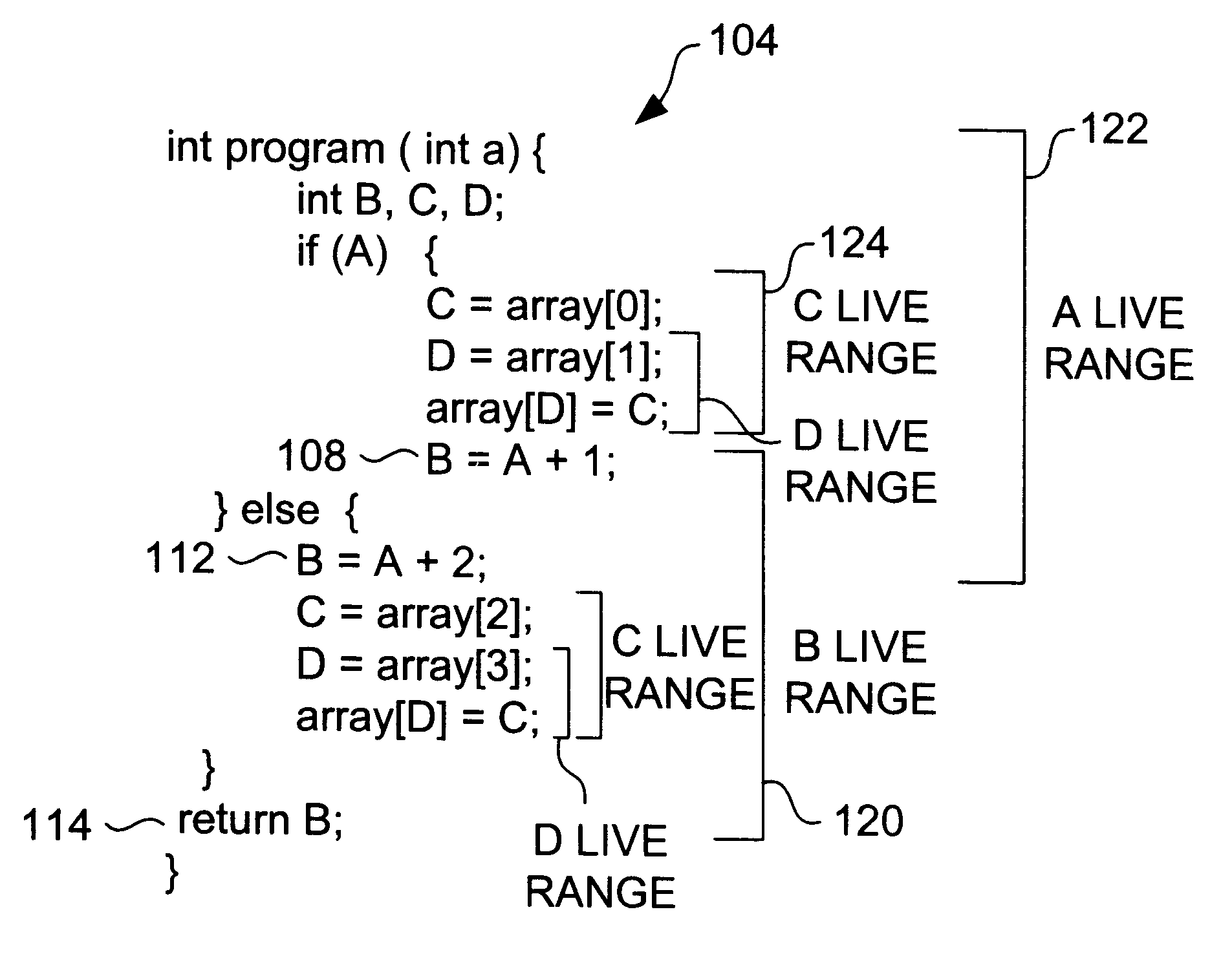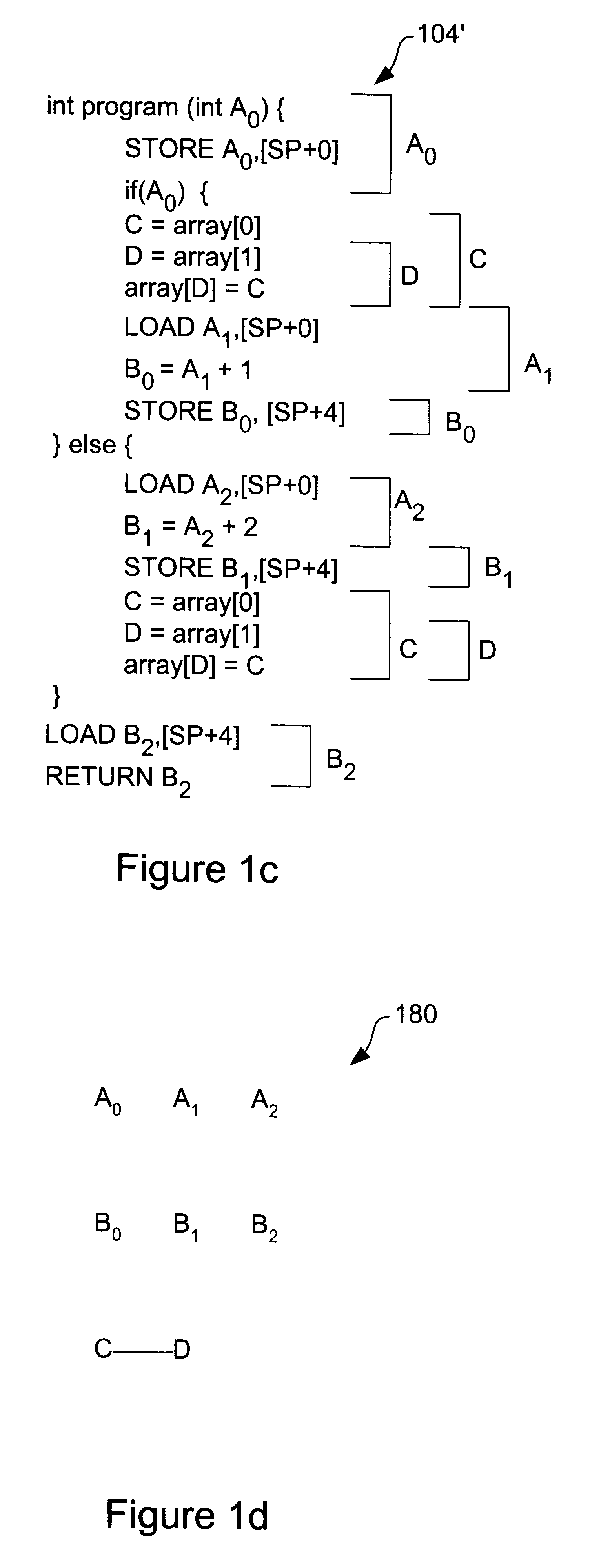Method and apparatus for allocating stack slots
a technology of stack slots and stack slots, applied in the direction of instruments, computing, electric digital data processing, etc., can solve the problems of live ranges being spilled, consuming fewer computer resources, and some data being spilled into stack slots
- Summary
- Abstract
- Description
- Claims
- Application Information
AI Technical Summary
Problems solved by technology
Method used
Image
Examples
Embodiment Construction
An optimizer, or a compiler, often includes a stack slot allocator that is used to allocate stack slots to hold variables which may not be stored in registers due to the fact that the number of registers associated with a processor is finite. The stack slot allocator is typically activated during a register allocation process when it is determined through an interference graph coloring algorithm that not all variables may be assigned to a register without conflict. The heuristics associated with treating stack-based variables, as for example in an attempt to free memory space associated with unused stack slots, often causes bugs to arise in the execution of source code. Further, the use of stack slots is often inefficient, as many stack slots within a stack frame are used for only a small part of the program.
By treating stack-based values or variables in the same manner as machine registers, a specialized stack slot allocator will not be required. Eliminating such a stack slot alloc...
PUM
 Login to View More
Login to View More Abstract
Description
Claims
Application Information
 Login to View More
Login to View More - R&D
- Intellectual Property
- Life Sciences
- Materials
- Tech Scout
- Unparalleled Data Quality
- Higher Quality Content
- 60% Fewer Hallucinations
Browse by: Latest US Patents, China's latest patents, Technical Efficacy Thesaurus, Application Domain, Technology Topic, Popular Technical Reports.
© 2025 PatSnap. All rights reserved.Legal|Privacy policy|Modern Slavery Act Transparency Statement|Sitemap|About US| Contact US: help@patsnap.com



